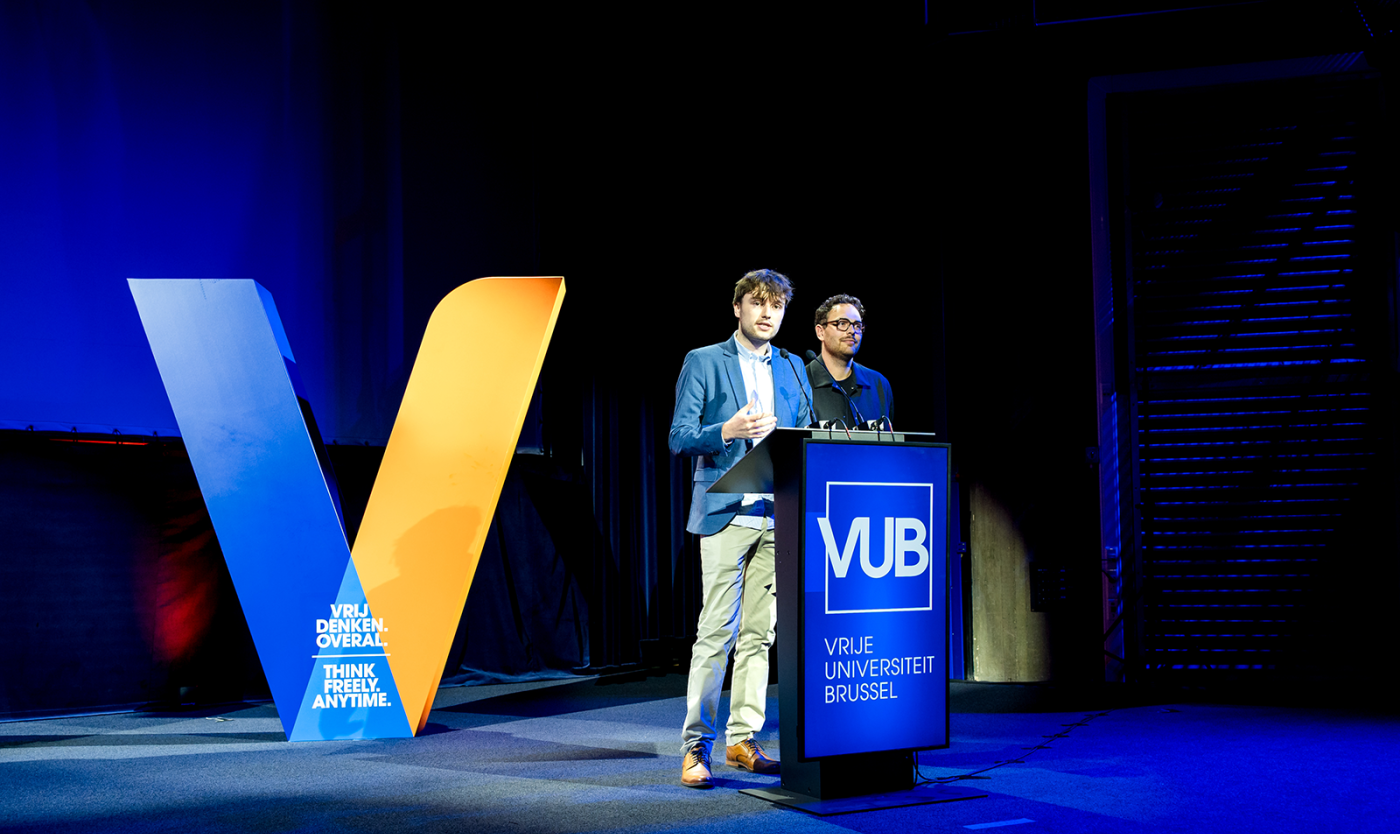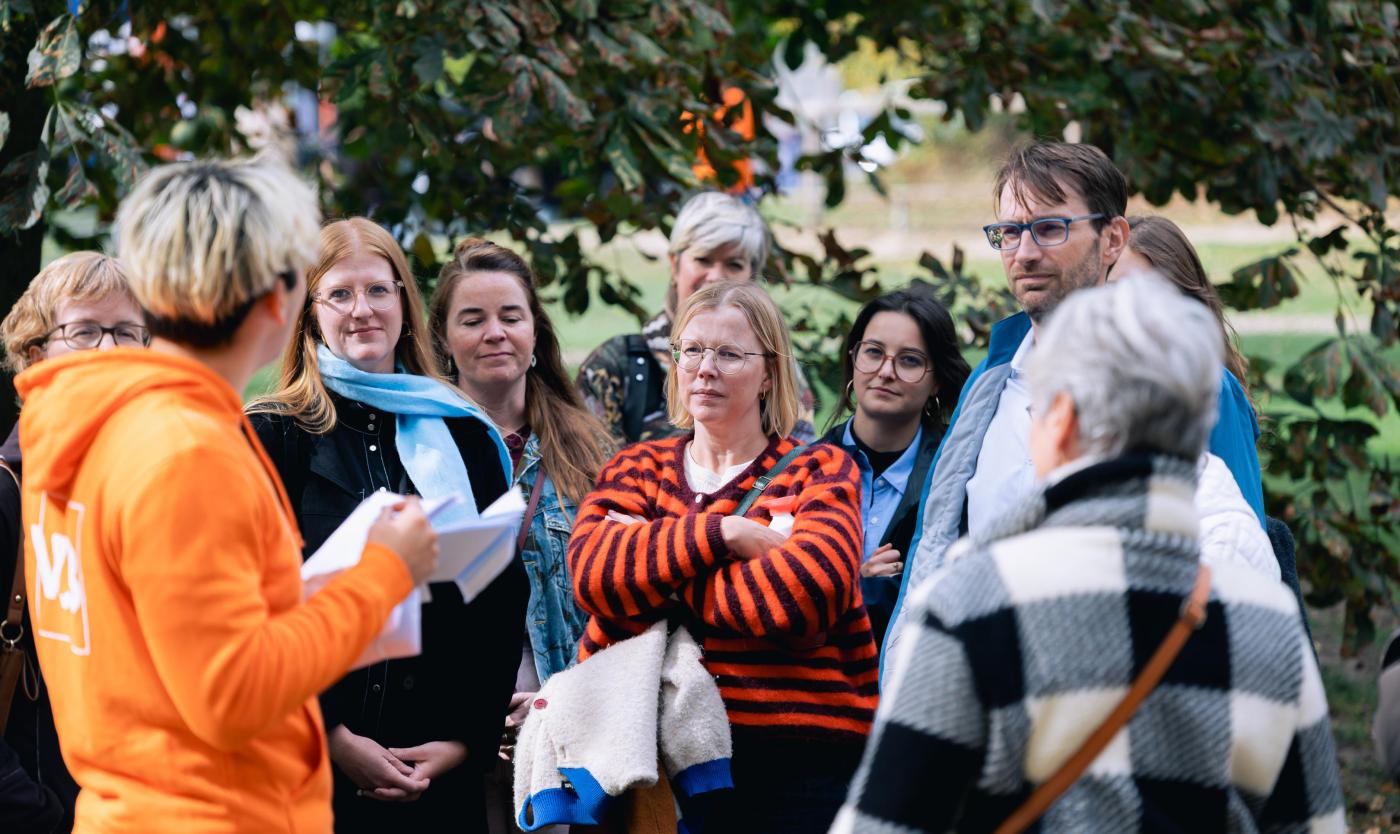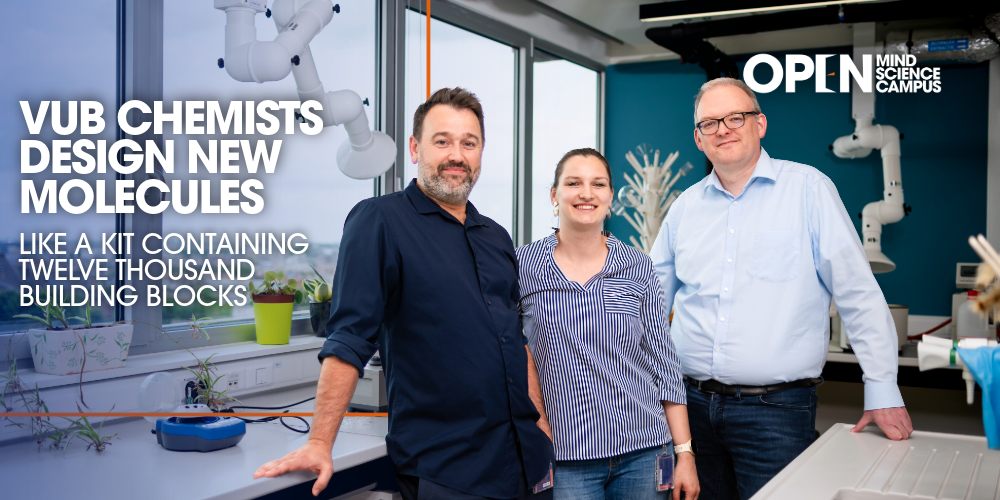
The laboratories of the Organic Chemistry research group are located on the top floor of Building G, at both the front and back. “That way, we always have daylight where we spend most of our hours,” says head of department Professor Steven Ballet. “We’ve placed our teaching lab right between two research labs. A conscious choice, in line with the VUB’s educational vision: ‘Teaching driven by research’. We hope our enthusiasm proves contagious for the students.”
In 2023, the Organic Chemistry group swapped the ninth floor of Building G for the tenth. Thanks in part to funding from the European Union and the Brussels Capital Region through the ERDF (European Regional Development Fund) program, the outdated, 50-year-old laboratories have been transformed into brand-new, state‑of‑the‑art facilities. The panoramic view over Brussels’ landmarks still impresses, says lab manager Jolien De Neve. “The first snowfall, a rainbow, the sun breaking through the clouds: it’s wonderful to feel that constant connection with the outside world at your workplace. Thanks to the glass walls, daylight even streams into the offices in the middle of the building. There are worse places to sit.”
“At heart, we’re builders – but on a very small scale”
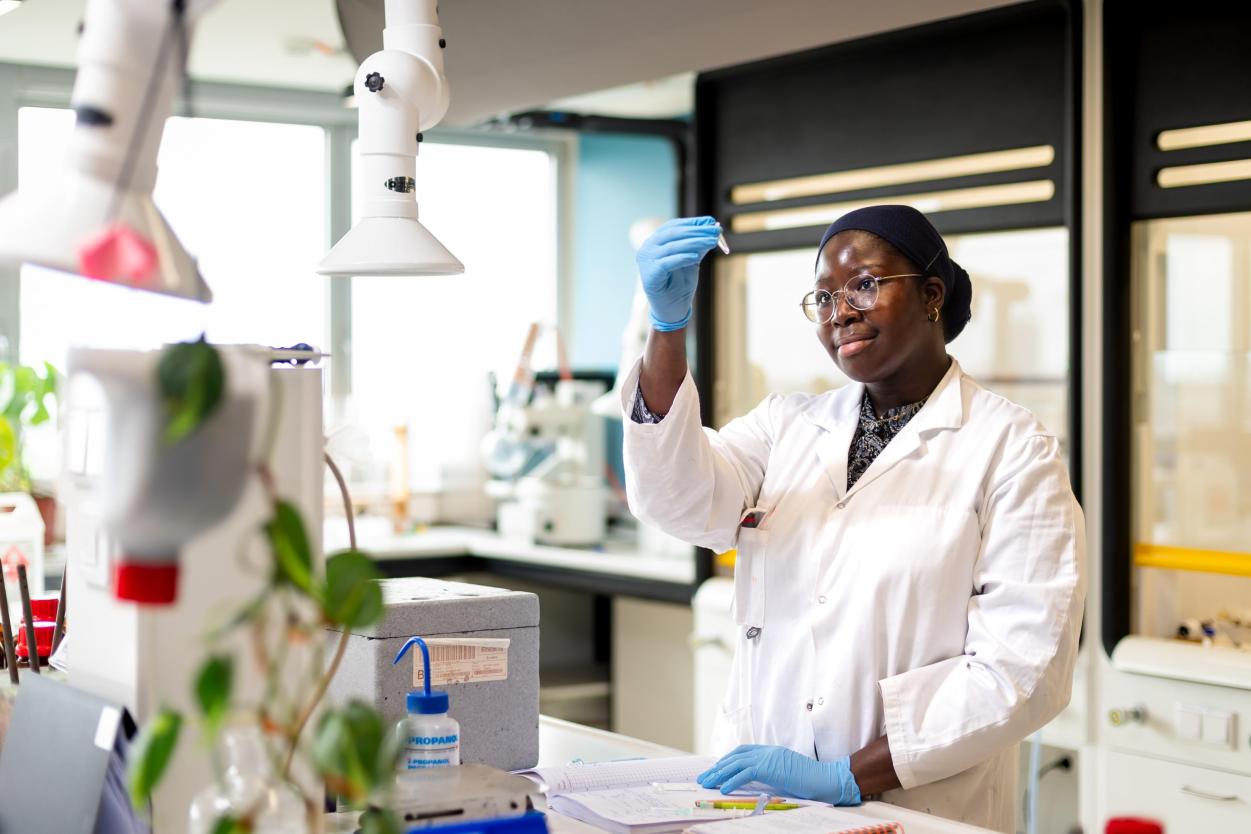
The play of natural light offers a welcome pause, but soon the focus shifts back to research. The central question for the Organic Chemistry group: can we make it?
Steven Ballet: “In essence, we’re builders, but on a tiny scale: we imagine, design, and construct molecules that don’t exist in nature – molecules that can do remarkable things, particularly in medicine. We create them, but we don’t test them ourselves. For that, we collaborate with a wide network of experts, ranging from molecular biologists to physicians. They evaluate whether the molecules actually have the intended biological activity.”
The group’s “construction set” now contains 12,000 building blocks – double the number available in their old lab. The more building blocks, and the more refined they are, the greater the creative possibilities. The lab itself is divided into ‘wet’ labs and ‘dry’ labs. Wet labs are where new molecules are made. Dry labs are analytical spaces, where the structure of existing molecules is determined or fine-tuned. That requires high-tech instruments, such as NMR and mass spectrometry.
“With peptides we make gels that release medication steadily over time”
The plastic interior of a car, cosmetics, food colourings, the LED screen on your phone, agricultural pesticides… a world without organic chemistry is unthinkable. At the VUB, much of the focus lies on medical applications. For that, Steven Ballet often works with peptides. Like proteins, peptides are chains of amino acids – but they are smaller, shorter, and therefore easier to design and adjust.
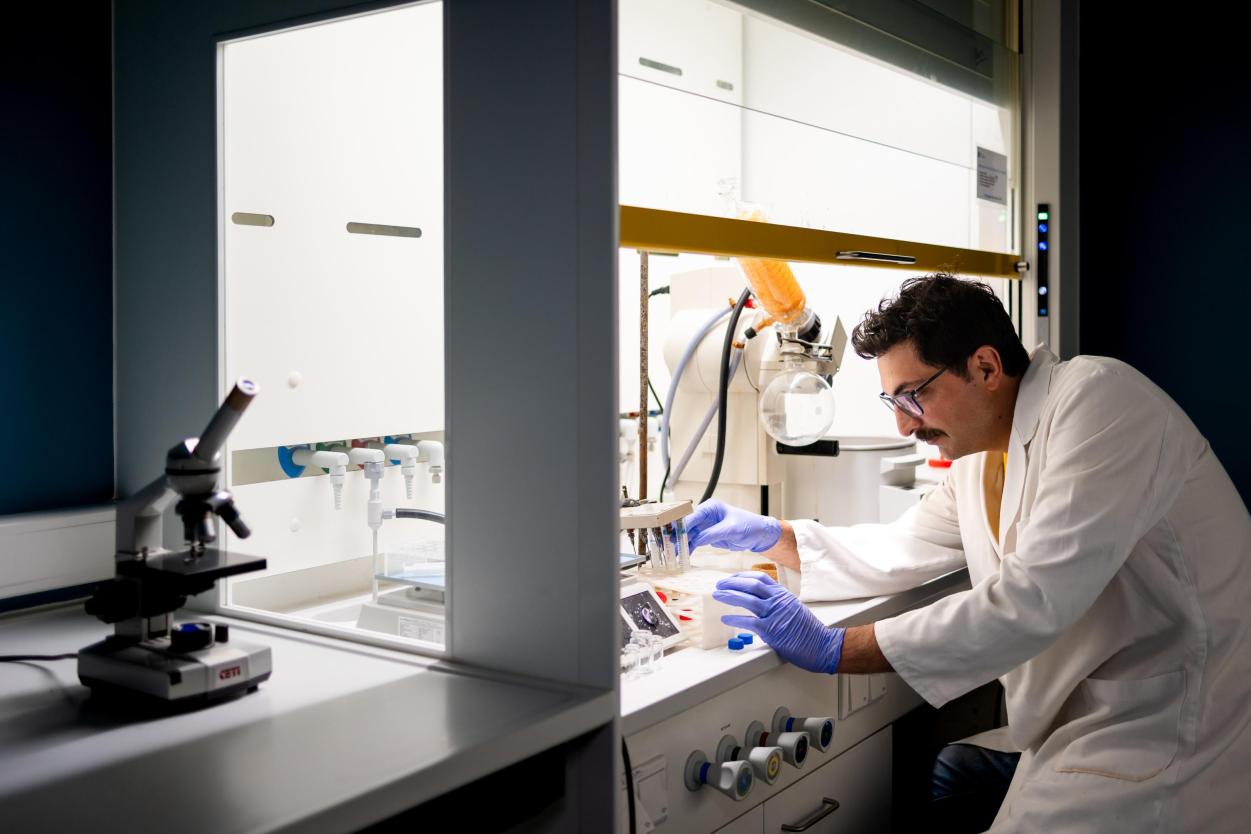
Steven Ballet: “We’ve created peptides that form soft biomaterials, a kind of gel. Medication can be incorporated into that gel. When injected under the skin, the drug is released steadily, over a longer period, instead of in one sharp peak. That’s called controlled release. For some chronic conditions, this is crucial. Controlled release is already being applied today in medication for diabetes and schizophrenia.”
Another research line recently earned Steven the 2023 Evotec Award for Excellence in Molecular Design. Here again, peptides took centre stage – this time helix peptides. With these, the team created so-called tool molecules. They are not medicines themselves, but tools to speed up the search for new drugs.
“Thanks to our tool molecules, you can test large numbers of drug candidates much faster”
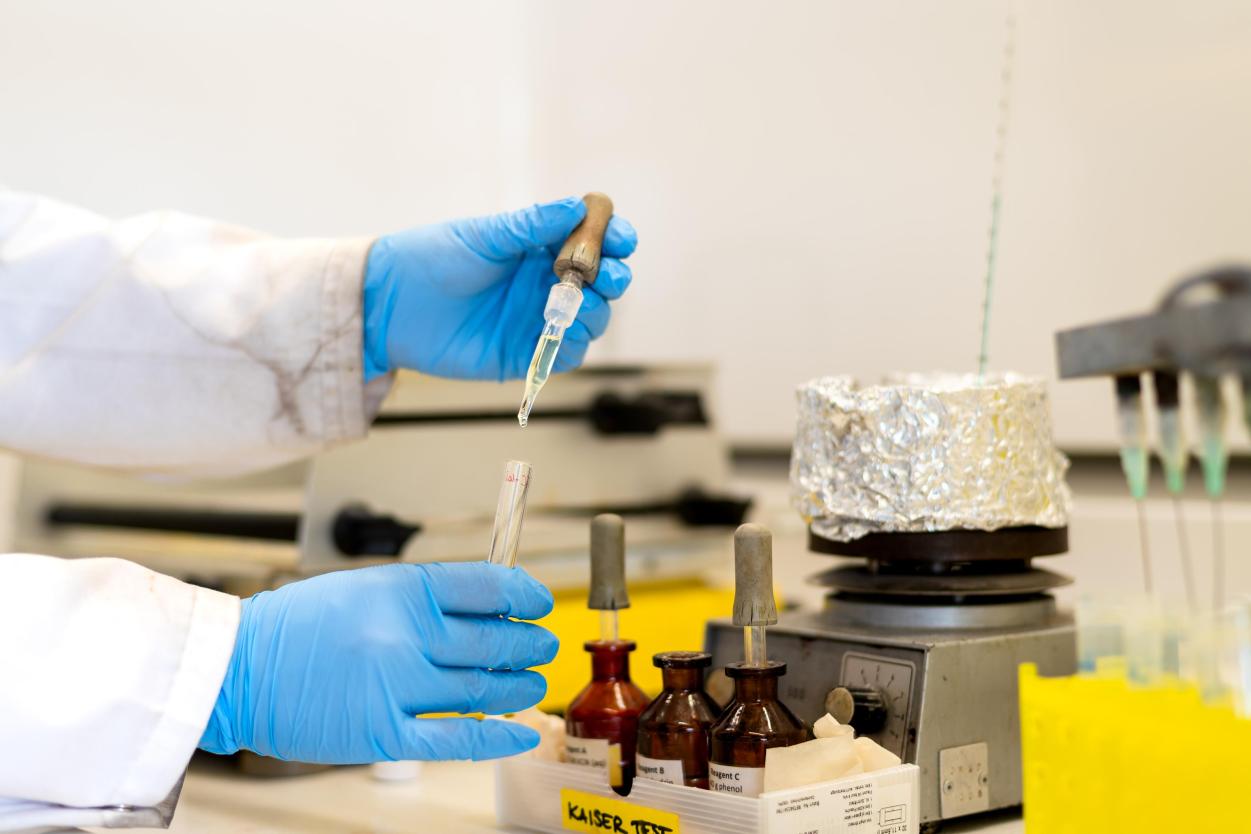
Steven Ballet: “Many medicines act by binding to receptors – specific proteins on the surface of cells. The drug is the key; the receptor is the lock. If the key fits, the receptor signals the cell, triggering a therapeutic effect. Normally, receptors are very flexible and difficult to study. Our helix peptides mimic proteins that temporarily ‘freeze’ the receptor in an active form. This makes it much easier to quickly test large numbers of drug candidates. Our research mainly focuses on G protein-coupled receptors, or GPCRs. They play a key role in a wide range of common conditions, including asthma, high blood pressure, Parkinson’s disease and depression.”
Lab manager Jolien De Neve also investigated GPCRs. Her doctoral research focused on pain therapy and opioid receptors.
Jolien De Neve: “Opioids such as morphine, oxycodone and fentanyl are powerful painkillers, but they come with serious side effects. Addiction is well-known, constipation too. But the biggest risk – and many people don’t realise this – is a phenomenon called respiratory depression. People who develop a dependency need higher and higher doses to feel the same effect. When the dose gets too high, breathing can simply stop.”
Jolien compared two new peptides from the lab with morphine and a marketed analogue. She demonstrated that the new compounds did not trigger respiratory problems. So, was the pharmaceutical industry eager to bring a safer painkiller with fewer side effects to market?
Jolien De Neve: “Not really. Morphine works very well when used properly under medical supervision. Overdoses are mainly an issue in illegal use. That means there’s only limited incentive to invest in alternatives.”
“We study the signal molecules that regulate how bacteria become pathogenic”
The work of Steven and Jolien balances between fundamental research and practical applications. Ulrich “Uli” Hennecke – who swapped Germany for Belgium in 2018 – leans more toward the fundamental side. He focuses on developing methods to synthesise organic molecules. Yet even this could one day lead to surprising medical applications. For example, as an alternative to antibiotics in the fight against resistance.
Ulrich Hennecke: “Bacteria regulate their pathogenicity – their disease-causing power – by secreting signal molecules. That process is called quorum sensing. Through these molecules, bacteria communicate and coordinate their behaviour. As long as their numbers are low, they lie low. But once a threshold is reached, they become aggressive. They start producing toxins, forming biofilms that increase resistance to antibiotics. They even migrate collectively towards infection sites and evade the immune system – all thanks to those signal molecules.”
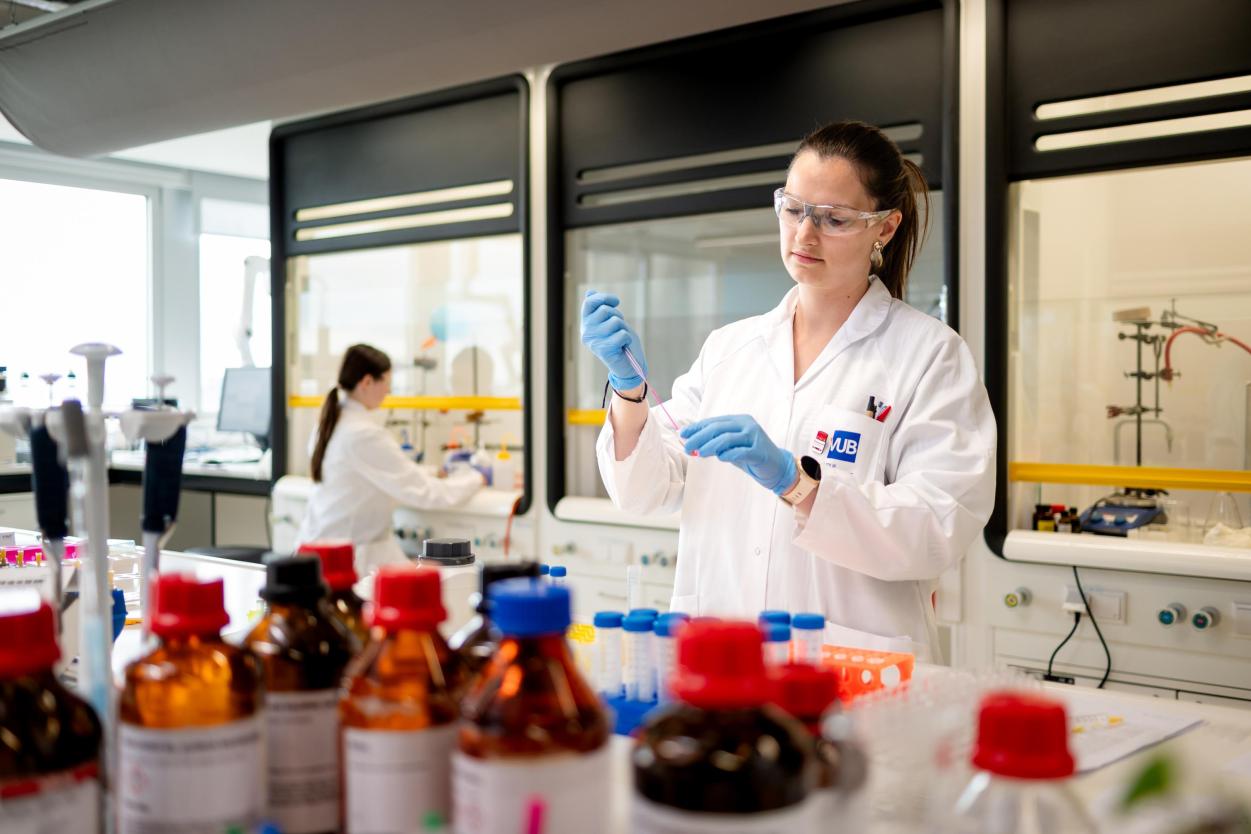
Ulrich investigates how these molecules are structured, hoping one day to create compounds that can disrupt this communication and make bacteria less aggressive.
Ulrich Hennecke: “That’s still a long way off. The challenge will be to design molecules that interfere with quorum sensing without serious side effects. Traditional drugs bind to a receptor and then leave again. Our molecules would attach and stay. That means you need to be absolutely sure you’re hitting the right target – and nothing else.”
Steven Ballet: “That’s always the challenge in molecular design. You need to be able to make the molecules, but they also have to be non-toxic in a biological system, have the right lifespan, work temporarily, and then gradually disappear. The wish list is long. Even with 12,000 building blocks, we don’t have everything we’d like.”
A peek inside the labs of VUB scientists?
Join us on 23 September 2025 for the Academic Opening and explore the renewed VUB laboratories
On 23 September, VUB will not only open the new academic year but also the doors of its laboratories. Discover live the technological innovations and scientific breakthroughs our researchers are working on – the very ones that could soon make the headlines.
